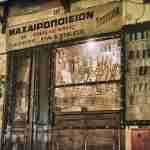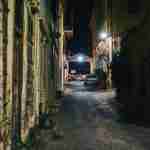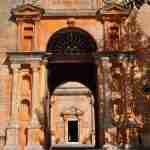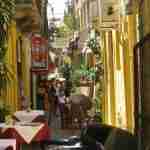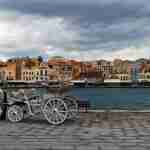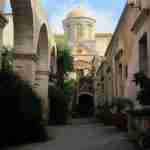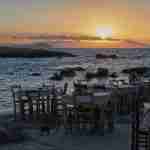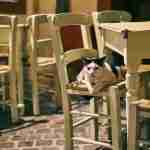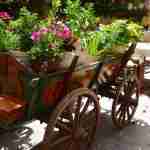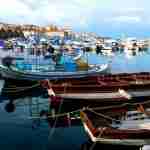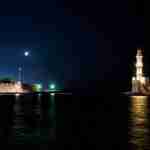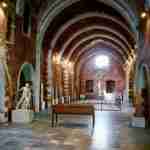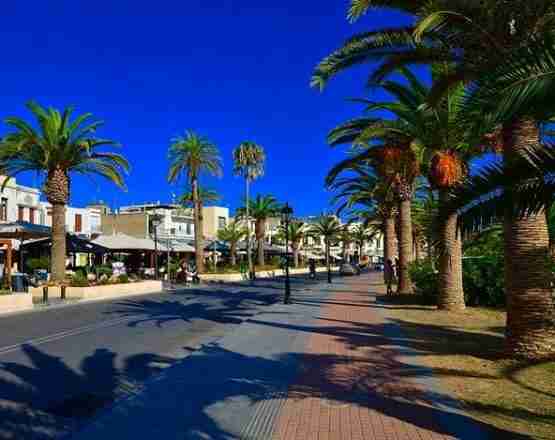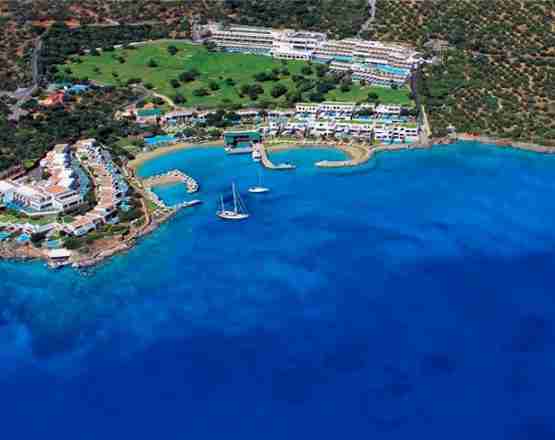Chania city tour
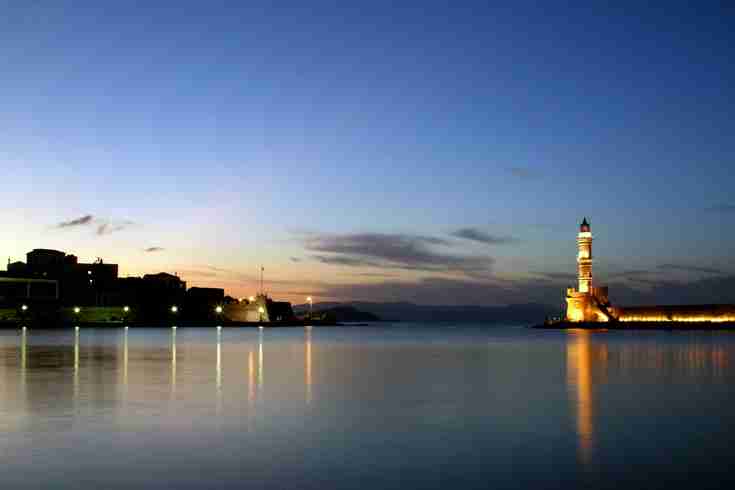
The Cretans are the Scots of Greece, though living at the extreme south end of the country. They have endured through countless crises, to emerge always just as truly themselves as before.
Crete is a large island and deserves at least several days of savouring: not merely for proper ruin-hunting, but also to appreciate its fair and varied landscape. The island is divided into four administrative regions today, much as it was long ago in the Venetian period of control.
Some say that the most beautiful city of the island is that of Chaniá. And here it is that you are whisked off to on this tour – with your very own qualified and licensed guide – first to see the highlights in the environs outside the city, before visiting its ancient heart and the Venetian harbour town!
You first visit the Holy Monastery of Tsagarolon, a fine example of both Renaissance and Baroque styles in Crete. It produces organic wine and prize-winning organic olive oil. You will have the chance to see the grounds of this beautiful Monastery, as well as enjoy the wine and olive oil tasting in its cellars.
You then visit the burial grounds of the Venizelos family, as well as hill of Profitis Ilias.
From here you may take in the city of Chaniá laid out down below – its stunning view well worth a record photograph.
You continue down and into the city centre, whence the tour is conducted on foot with your guide. Later you will meet up again with the bus-driver to depart for home.
Chaniá today occupies the Minoan city of Kydonia, mentioned in the Odyssey by Homer. It is in fact one of the oldest major urban settlements within today’s Europe – being constantly lived in since Neolithic times (some 6 or 7 millennia ago).
On the tour of Chaniá, you will be shown the layers of history as revealed by the very fabrics of the buildings, one on top of another, like a mille-feuille sweet. Starting with the Bronze Age levels of Kydonia, there follow traces of the Iron Age, Classical, Hellenistic and Roman cities of Antiquity. On them sit the Byzantine walls and even an almost unnoticed Byzantine Aps, succeeded in turn by the Venetian fortification walls that are wrapped securely around Palazzos, the Jewish Ghetto, basilica, shipyards and harbours. Finally comes the Ottoman manifestation, with its hamams and minarets grafted onto earlier churches. As you walk through the maze-like streets of the old town, you catch glimpses of its many pasts and histories, while having the opportunity to taste some of the local delicious dishes available in the here and now! You will also have the opportunity to familiarize yourself with the local products: a foray into the Covered Market (a vast and symbolic cruciform building built upon Crete’s independence) will tantalize by its numerous stalls full of colours, textures and aromas.
Eventually you will come to understand and sympathize with the observations of Robert Byron (The Station – published in 1928 by Duckworth of London)
To portray here the full uniqueness of Crete – an island which until 1898 had been subjected to 700 years of occupation, and incessant revolt, is scarcely possible. Our visit was only to reconnoitre, a prelude perhaps to further and fuller exploration. At first we remained in the capital Chania. The buildings of this town embody in their fabric the whole history of the Levant. Across the mouth of the harbour, as the rowing boat enters, runs a mole that ends in a Turkish Lighthouse, rather like a truncated minaret delicately ornamented with stone embroidery. Nearby to its east stands the earliest mosque built on Crete, a tiny building with a dome that somewhat resembles a doughnut and is supported by flying buttresses that might have been borrowed from St. George’s chapel in Windsor. Look now across to the West: here lies Venice. High multi-coloured houses, whose every window are reflected in the sun-lit harbour waters, stand jumbled along the quay – look closely with half-shut eyes and Venice looks back at you. The emblematic lion of Saint Mark raises its weather-worn wings in another echo, high up on the sloping face of the massive walls of defence.
Behind, and inland from the sea-frontage, it is the same. Twisting narrow streets are cut off from the sun by the uprearing houses: on display are Renaissance porticoes, bedecked by the proud escutcheons of the Venetian nobility and even bas-relief portraits of generals of the Most Serene Republic in their plumed helmets. (On one such there appears also the stone fez of a later tenant. And to complete the tale or changing ownership, the cornice has been furnished with a row of later Greek Acroteria.) Close by lies the old Turkish quarter, today the commercial centre, where ranks of windowless shops are piled high with imports from the West, side by side with the traditional clothing and commodities of the island.
It was October. The weather was clearing up again … and the sun shone down with golden warmth in the squares, upon the tall swinging men in their dress of top boots, black Turkish trousers falling in a huge bulge of fabric behind and the black cross-stitched shirts to which were sometimes added blue cloaks, embroidered and hooded. At all the street corners chestnuts were roasting temptingly on braziers. Fruit and game were piled high in the market. We lunched as a rule in a disused mosque, where we were always invited to choose our own partridge in the kitchen.
Why choose to book this tour of Chaniá?
To see, feel and discover with every sense you possess the microcosm of Chaniá. To walk alongside those well-travelled, and well-versed wanderers, the poets and writers, people like Odysseus … who disguised as a beggar claimed to be from Kydonia.
What do you see on this tour with your qualified and licensed guide?
The Market, and the quarters where once traded the Armenian dagger-makers, and where too the silkworms endlessly and noisily munched their mulberry-leaves; the harbour and the gigantic arsenals; the religious foundations of many faiths – churches, cathedrals and basilicas, the synagogue, and mosques and minarets; fountains gracing old neighbourhoods; foodstuffs of the region – the cheeses and dairy products, honey, aromatic herbs and pungent spices; the work of artists in paint, metal, clay and foods … all go to makeup Chaniá!
You will have time to wander and ponder, to take photographs to your heart’s content – for surely it will be day you wish to remember and share!

